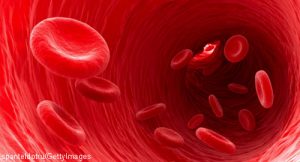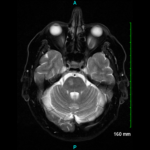 On April 29, the U.S. Food & Drug Administration (FDA) approved upadacitinib for the treatment of adults with giant cell arteritis (GCA), also known as temporal arteritis.1 This is the ninth FDA-approved indication for upadacitinib, which is the only Janus kinase (JAK) inhibitor currently approved to treat GCA.2
On April 29, the U.S. Food & Drug Administration (FDA) approved upadacitinib for the treatment of adults with giant cell arteritis (GCA), also known as temporal arteritis.1 This is the ninth FDA-approved indication for upadacitinib, which is the only Janus kinase (JAK) inhibitor currently approved to treat GCA.2
Background
Upadacitinib is an orally administered JAK inhibitor initially approved by the FDA in August 2019 for the treatment of adults with moderate to severe, active rheumatoid arthritis (RA) who could not tolerate or who had an inadequate response to methotrexate.3
The other FDA-approved uses of upadacitinib include the treatment of:
- Adults with active psoriatic arthritis who have had an inadequate response or cannot tolerate one or more tumor necrosis factor (TNF) inhibitors;
- Patients 12 years and older with refractory, moderate to severe atopic dermatitis whose disease is not adequately controlled with other systemic drug products, including biologics, or when use of those therapies are inadvisable;
- Adults with moderate to severe active ulcerative colitis or Crohn’s disease who have had an inadequate response or intolerance to one or more TNF inhibitors;
- Adults with active ankylosing spondylitis who have had an inadequate response or intolerance to one or more TNF inhibitors;
- Adults with active non-radiographic axial spondyloarthritis with objective signs of inflammation who have had an inadequate response or intolerance to TNF inhibitor therapy; and
- Patients 2 years and older with active polyarticular juvenile idiopathic arthritis or active psoriatic arthritis who have had an inadequate response or cannot tolerate one or more TNF inhibitors.
For all indications, upadacitinib is not recommended for use in combination with other JAK inhibitors, biologic disease-modifying antirheumatic drugs or potent immunosuppressants, such as azathioprine and cyclosporine.
The Research
The approval of upadacitinib in patients with GCA is supported by findings from the phase 3, multicenter, randomized SELECT-GCA clinical trial (NCT03725202).4 This study enrolled 428 patients with GCA, of whom 70% had new-onset GCA.
In the study, patients were randomly assigned in a 2:1:1 ratio to receive either 15 mg of upadacitinib (n=209) or 7.5 mg of upadacitinib (n=107) once daily plus a 26-week glucocorticoid taper or placebo (n=112) plus a 52-week glucocorticoid taper. The study’s primary end point was sustained remission at week 52, defined by the absence of signs or symptoms of GCA from week 12 through week 52 and adherence to the protocol-specified glucocorticoid taper.
The primary end point was met by the 15 mg-treatment group, with 46.5% of patients who received 15 mg of upadacitinib in combination with the 26-week glucocorticoid taper achieving sustained remission. This result was in comparison to 29% of patients who received placebo with a 52-week glucocorticoid taper achieving a sustained remission. The 7.5 mg dose of upadacitinib was not superior to placebo with respect to achieving sustained remission.


